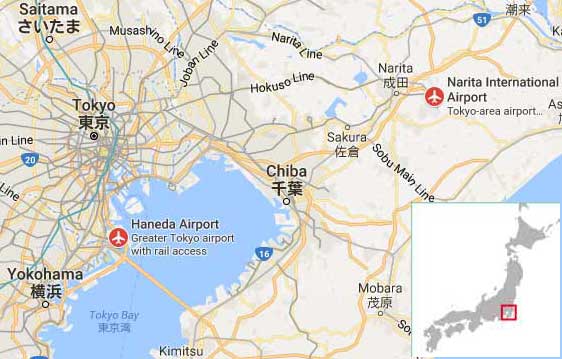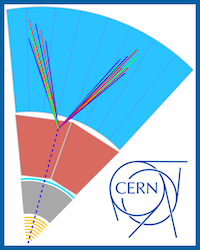In case of emergency, you can call any time : 090-7849-0878
you can reach Ryu Sawada in the workshop period. From international phone, you need to replace 090 with +81-90.
Transportation:
Flight to Japan, Tokyo: Narita (NRT) or Haneda (HND)
- From Europe: direct flight from Major cities
- Paris, Zurich, London, Frankfurt, Helsinki, Moscow, etc...
- From the US: direct flight from major cities
- New York, Chicago, Los Angeles, etc...

Airport to Ueno station
- From Haneda Airport: Take Mono Rail to "Hamamatsu-cho" JR station (25 min). Then take the JR-Yamanote line to Ueno (15 min). Ueno station is the closest station to the University of Tokyo. The ticket costs about 650 Yen.
- From Narita airport: Take the "Skyliner" to Ueno which is an express train of Keisei Railway. (40 min) The ticket costs about 2500 Yen.
Ueno station to U-Tokyo Hongo Campus
- On-foot: Through the park, it takes about 20 min.
- Bus: Take "Gaku01" line from Ueno to "TodaiKounai".
Campus Maps (Hongo Campus) is from this Link
Venue: Koshiba Hall
Location: https://maps.app.goo.gl/tpZZ5nGwtoXgaDp77
How to reach the Venue?
- The public bus is from Ueno / Okachimachi. (the closest bust stop is 2 min.)
- Subway line is Oedo-line(E08) or Marunouchi-line(M21) or Nanboku-line (N12).
- 20 (15) min walking from JR Ueno (JR Okachimachi) station.
Map of Campus and location of the venue, including lunch places
Pre-paid card:
- Suica: pre-paid card for public transportation, JR- and non-JR trains, busses, trams and subway. You can buy it at airports and any JR train station. You can use this card also for many stores (including cafeterias in the University, convenience store in town) and a part of vending machines to buy food/drink/snacks. Only yen may be used to load a card at JR train stations and convenience stores. A credit card cannot be used to load a Suica.
- A special version of Suica, called Welcome Suica, is available to foreign tourists. The special cards are valid for only four weeks, come without a deposit fee, but do not allow for refunds. It can be purchased at limited places (e.g. Airport), please check the website for details.
- Pasmo: Pasmo is similart to Suica, but sold by other companies.
- Japan Railway pass is good if you have a train trip before/after the workshop,
Mobile and wifi:
Eduroam is available in the campus. If you need a temporary account, please ask at the registration desk.
If you need a SIM card for data transmission, you can get it at airports. In downtown, you can purchace a reasonable card at Big Camera (a detailed plan can be checked at https://www.bmobile.ne.jp/english/)
Lunch:
Cafeterias are close to the venue. The 2nd Cafeteria is less crowded than the main cafeteria. Also, local noodle shops, cafes, restaurants are within a 5-minute walking range. You can find options on this map.
- Vegan menus are available in the main cafeteria (②), Subway (L2), and Nesu no Tani (L8, better to check if it would open or not.).
ATMs:
You can withdraw cash using your international brand credit card, debit, prepaid and cash cards nationwide at the Japan Post Bank Office ATMs, and at Seven Bank ATMs located in most 7-Eleven convenience stores.
Payment:
International credit cards are acceptable at major chain stores/restaurants and many individual ones, including university cafeterias. Credit cards on smartphones, Apple Pay and Google Pay, can be used as well. However, small and those outside big cities may not accept credit cards. Many stores/restaurants accept also Suica and Pasmo.
Tipping is not common in Japan. If you try to do so or try to leave small change there, store staff will be confused.
Electricity:
In Tokyo, electricity operates on 100 volts and 50 Hz. The frequency is different in the east and west parts of Japan. If you plan to travel to other cities, such as Kyoto, it can be 60 Hz. The type A plug, the same as North and Central America, is used.
Smoking:
Smoking in the University of Tokyo is permitted only in designated areas (here). Smoking in public places and on public roads, except for smoking areas, is prohibited in Bunkyo and Taito wards around the University. Taito ward provides a smoking area map. Some cafes and restaurants may allow to smoke.
Probably the nearest place outside the campus is here.
Earthquake:
In case you would encounter an earthquake, do not panic. You may receive an SMS message in advance. Buildings in Japan have a high tolerance for earthquakes. You can stay in the building. But you had better be away from windows, lamps, anything could fall off. The meeting point is above, the ground level, the main cafeteria (②), in front of the Yasuda-kodo hall.
